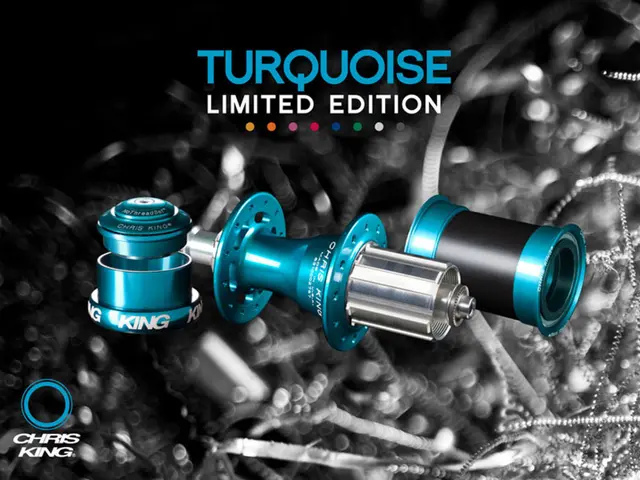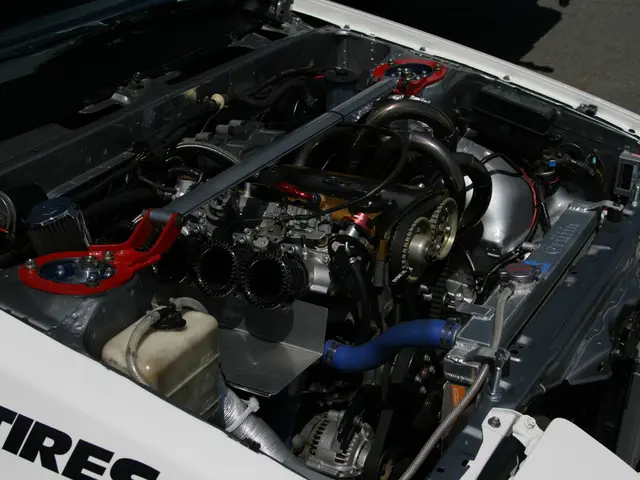Hot off the assembly line: DS N°4 Electric
Electrical Revamp of DS Model 4: DS No 4 Transitions Entirely to Electrified Powertrain
The DS N°4 has gotten a facelift... and a powerful electric makeover! Now called DS Automobiles N°4, this compact ride isn't just about a new name. The electric variant takes center stage.
The N°4 echoes the chic, exclusive aura of French fashion house Chanel, bringing luxury and style to the automotive scene. But don't mistake it for Bugatti; it's a more accessible option with unexpected touches like Nappa leather and other upscale materials.
So what's changed under the hood?
Electric Motor Gets a Boost
Some changes were bound to happen. The diesel's exchange farewell, and the entry-level model is now a hybrid, offering a system output of 107 kW/145 PS for just 38,640 euros. Its 100 kW/136 PS 1.2-liter three-cylinder engine gets a boost from a 21 kW electric motor, similar to other models within the Stellantis group.
The plug-in hybrid variant offers a slight upgrade to the electric motor's power, increasing from 81 kW/110 PS to 92 kW/125 PS, enhancing the electric drive. Say goodbye to the eight-speed automatic transmission, which is now replaced by a seven-speed dual-clutch transmission. The battery's net capacity has also seen an increase from 10 kWh to 14.6 kWh, allowing the 1.7-tonner to drive up to 77 kilometers in the averaged WLTP cycle.
Introducing the Electric N°4
But the excitement doesn't stop there. The all-electric N°4 debuts without an internal combustion engine for the first time. Although the powertrain isn't a direct copy from the Citroën ë-C4 or Peugeot 308, the battery capacity sees a notable increase to 58.3 kWh for the first time in the EMP2 candidates. The charging power has escalated from 100 kW to 120 kW, but details about charging time are scant for now.
The electric and plug-in hybrid N°4 models are pricier than the hybrid variant, but they benefit from more favorable tax legislation, particularly advantageous for company car drivers, who are in abundance in this country. The height of the company car tax is calculated on half the list price for the plug-in hybrid and a quarter of the list price for the electric car.
The newcomer adopts the trend of large letters on the trunk lid. Interestingly, despite the vehicle's transformation, it still provides the most volume under the hood with 430 liters for the lightly hybridized model. The plug-in hybrid (360 liters) takes the biggest hit, while the electric vehicle should still offer enough space for a family vacation with 390 liters.
- Stellantis
- French automakers
Deep Dive: Electric vs. Plug-in Hybrid vs. Hybrid
The DS N°4 is available in three variants: All-electric (E-TENSE), plug-in hybrid (PLUG-IN HYBRID), and hybrid (HYBRID). Here's a comparison of their key specifications:
DS N°4 E-TENSE (Fully Electric)
- Price: Not specified for the E-TENSE model alone, but the overall starting price for the N°4 is €39,000[2].
- Battery Capacity: Net capacity of 58.3 kWh[1][2].
- Charging Power and Time: 100 km can be charged in just 11 minutes, and 20 to 80% in 31 minutes at a rapid charging point[2].
- Range: 450 km (WLTP combined cycle)[1].
DS N°4 PLUG-IN HYBRID
- Price: Not explicitly mentioned, but typically more expensive than the hybrid variant due to the additional electric range capability.
- Battery Capacity: Net capacity of 14.6 kWh[2][4].
- Charging Power and Time: Supports up to 7.4 kW charging optionally, with a standard 3.7 kW on-board charger[4].
- Range (All-Electric): Up to 81 km (combined WLTP range)[2][4].
DS N°4 HYBRID
- Price: Starting at €39,000[2].
- Battery Capacity: Not specified, but likely smaller than the plug-in hybrid version.
- Charging Power and Time: Self-charging through regenerative braking.
- Range (All-Electric): Up to 50% of urban driving can be all-electric[2].
Comparing DS N°4 with EMP2 Candidates
The EMP2 platform is utilized by various models within the Stellantis group, such as the Citroën ë-C4 and Peugeot 308.
Citroën ë-C4 (Electric)
- Price: Generally lower than the DS N°4, starting around €25,000 to €30,000 depending on the market.
- Battery Capacity: Typically around 50 kWh (gross) and 45 kWh (net).
- Charging Power and Time: Can charge up to 100 kW, with 80% charge achievable in about 30 minutes.
- Range: Up to 360 km (WLTP combined cycle).
Peugeot 308 (Electric and Hybrid Options)
- Price: Starting at around €25,000 to €30,000 for the electric models.
- Battery Capacity (Electric): Around 54 kWh (gross) and 51 kWh (net) for the electric version.
- Charging Power and Time: Supports up to 100 kW charging, with similar times to the ë-C4.
- Range (Electric): Up to 400 km (WLTP combined cycle).
The DS N°4 E-TENSE offers a higher range and more advanced technology compared to its hybrid variants, making it a strong contender in the premium segment. However, it is generally more expensive than its EMP2 platform counterparts from Citroën and Peugeot.
- The electric variant of DS Automobiles N°4, a French car manufacturer, brings a powerful electric makeover to the automotive industry, providing a luxury and stylish transportation option that aligns with high-end lifestyle choices.
- The industry shift towards finance in the transportation sector is apparent in the electric N°4, as it boasts advanced technology and high-end materials, while still being accessible compared to some other premium brands.
- The electric N°4, while pricier than the hybrid variant, benefits from favorable tax legislation, particularly advantageous for company car drivers in this country, making it an attractive choice in the lifestyle-oriented luxury automotive market.
- As part of the Stellantis group, the technology in the electric N°4 is closely related to those of other electric-vehicles within the company, such as the Citroën ë-C4 and Peugeot 308, offering a strong competitive edge in the electric vehicle market.







